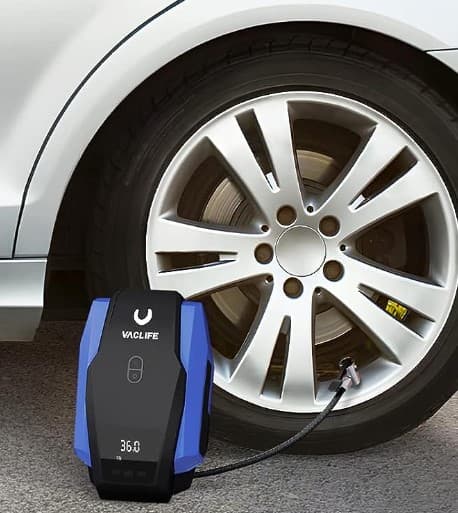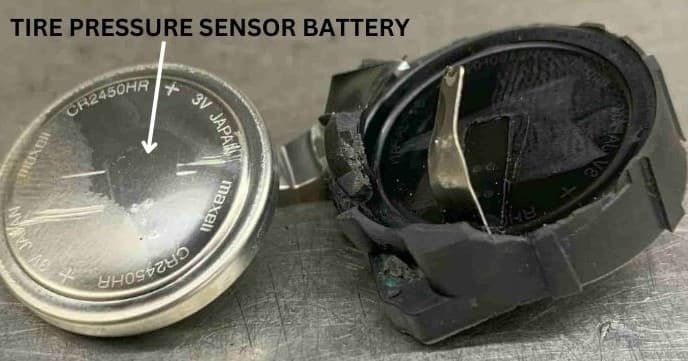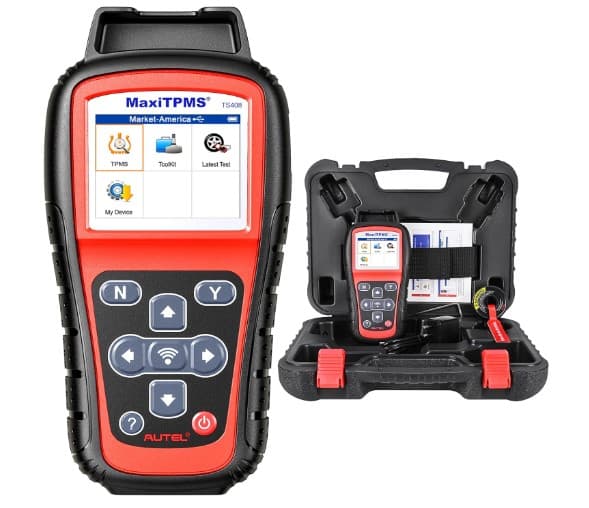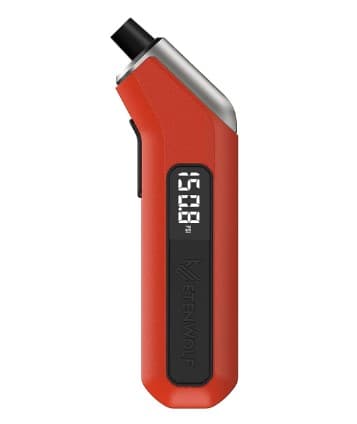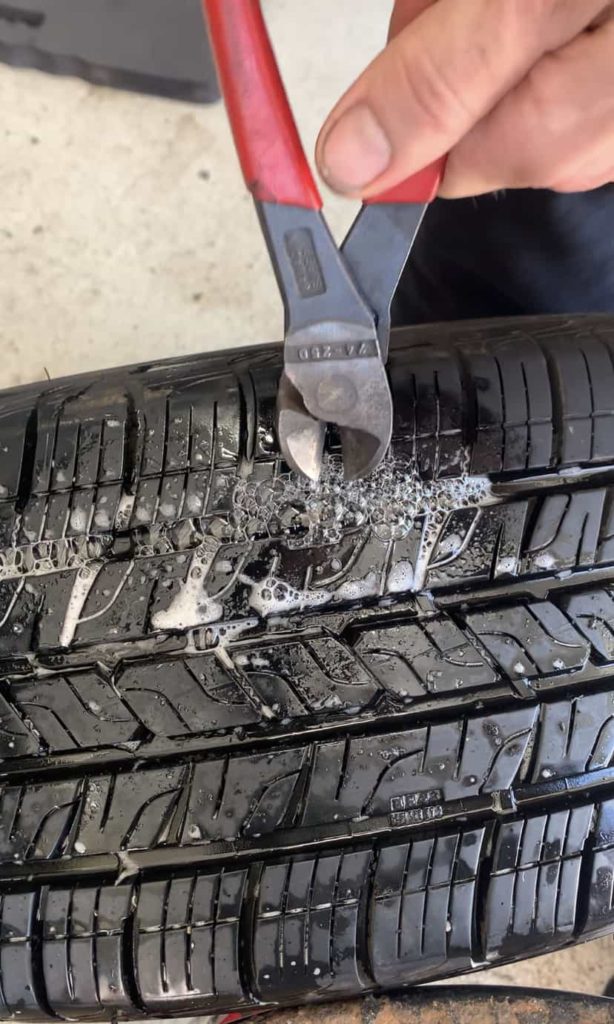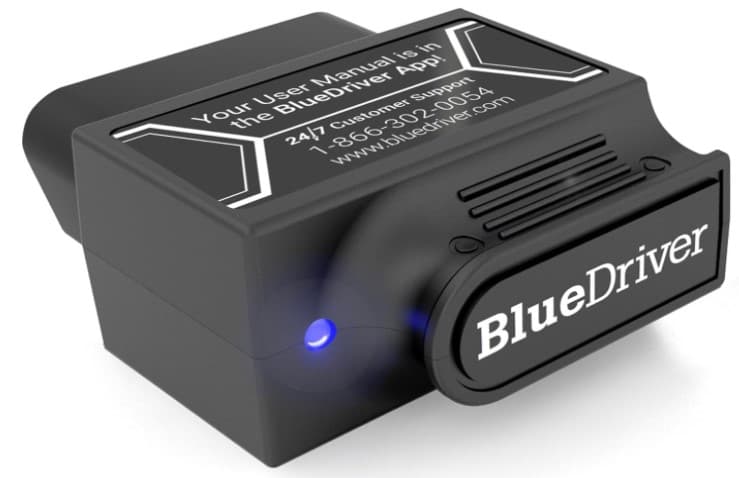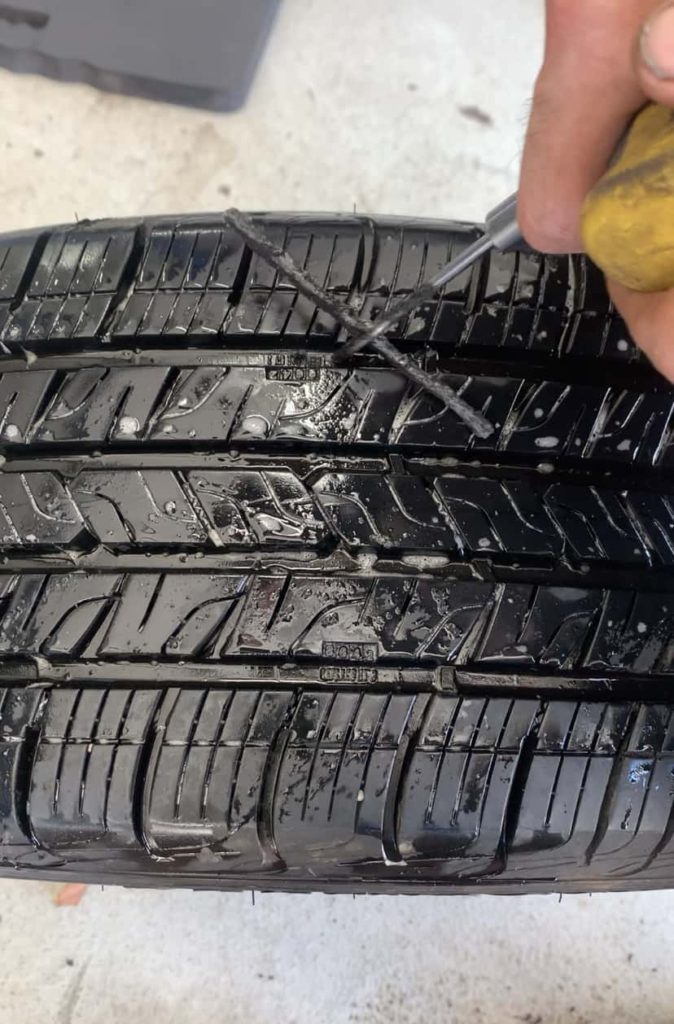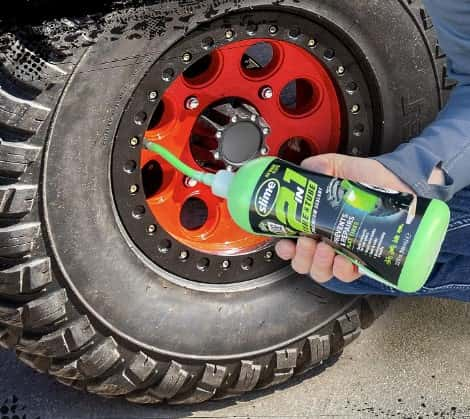What is the Dodge Ram Tire Pressure Monitoring System?
The Dodge Ram low tire pressure light may seem annoying but it’s essential to keeping your truck safe on the road. The Dodge Ram tire pressure monitoring system (TPMS) is just that, a system made up of 4 pieces that work together to let the driver know when there is an issue with a tire’s air pressure: Tire Pressure Sensors, TPMS receiver module, ECM, and the low air pressure warning alert message.
How Does the Dodge Ram TPMS Work?
Tire Pressure Sensors: Located in each Ram tire, they measure both air pressure and temperature.
Data Transmission: Sensors send real-time data to the truck’s computer using specific radio frequencies. (315 Mhz or 433 Mhz)
TPMS Receiver Module: A mini computer that receives and processes data from the sensors.
Engine Control Module (ECM): The Ram 1500/2500/3500 central computer that evaluates the tire pressure data.
Low Pressure Alert: If a tire’s pressure drops too low, a warning light (yellow exclamation mark) and sound alert the driver.
Self-Check Feature: The TPMS regularly checks its own system for issues and alerts the driver if found with a flashing tire alert symbol.
How to Reset the Dodge Ram Low Tire Pressure Light
Wait for the Dodge Ram tires to be cold. Do this before driving or after waiting 3 hours after driving.
Adjust and set the tires to the cold recommended values. Be accurate.
Drive the Dodge Ram for about 20 minutes while exceeding 15 miles per hour.
Note: The Dodge Ram trucks Do Not Have a Tire Pressure Reset Button!
How to Deactivate the Dodge Ram TPMS
To deactivate the Dodge Ram tire pressure system, replace all four wheels with wheels that do not have tire pressure sensors mounted inside. Once the Dodge Ram TPMS is deactivated the tire pressure values on the information screen will be replaced by dashes (~).
Replace all four wheel and tire assemblies with ones that don’t have TPMS sensors (e.g., for winter tires).
Drive the Dodge Ram for at least 20 minutes at speeds above 15 mph (24 km/h).
The TPMS will make a chime sound and the TPMS Warning Light will flash for 75 seconds and then stay on.
From the next ignition cycle onwards, the TPMS won’t chime or flash its warning light.
After TPMS deactivation, the current tire pressures will be replaced by dashes (~)
How to Reactivate the Dodge Ram TPMS
Put the original wheels and tires with the TPMS sensors installed back on the Dodge Ram.
Drive the Dodge Ram 1500/2500/3500 for up to 20 minutes at a speed above 15 mph (24 km/h).
Cycle the engine On and Off and then On again.
Drive the Dodge Ram for at least 20 minutes while maintaining a speed above 15 Mph.
2023 Dodge Ram 1500 Tire Pressure
TIRE SIZE | FRONT PSI | REAR PSI |
275/65R18 | 36 | 36 |
LT275/65R18 | 36 | 36 |
LT275/70R18 | 55 | 45 |
285/55R22 | 36 | 36 |
275/55R20 | 36 | 36 |
What Can Trigger the Dodge Ram's Low Tire Pressure Indicator?
Tires not inflated to the correct pressure (either too low or too high)
Air leakage from tires
Absence of tire pressure sensors
Depleted or faulty TPMS sensor batteries
Malfunctions with the TPMS receiver or Ram’s ECM
Disruption from electromagnetic fields
Atmospheric changes due to weather shifts or altitude variations
Overburdening the truck’s weight capacity
Application of tire chains
Excessively tinted windows
Fluctuations in road temperature
Physical tire damages or punctures
Tires that aren’t uniform in size
Wheels not aligned properly
TPMS software glitches
Hitting obstacles like curbs or potholes
Incorrectly mounted tires
Failure to recalibrate TPMS post tire replacement
Tire valve stem issues
Dodge Ram Tire Pressure Sensor Batteries
Each Dodge Ram tire pressure sensor has a circuit board, an antenna, and a built-in battery that isn’t replaceable or rechargeable. If the battery dies, the entire sensor has to be changed. Usually, Dodge Ram sensor batteries last between 5 to 10 years or about 100,000-150,000 miles.
Troubleshooting the Dodge Ram Tire Pressure Warning Light
Because the Dodge Ram does not have a tire pressure reset button, sometimes troubleshooting the low tire pressure light takes some process of elimination. One of the following solutions will help turn off the Ram’s low tire pressure warning light:
SOLUTION 1: IS THERE A TIRE THAT'S LOSING AIR PRESSURE?
If one of your tires is lower than the others, it’s commonly caused by some kind of tire leak. To check, do the following:
Visually inspect the tire and fill it with the cold recommended pressure value.
Drive the Dodge Ram at speeds above 15 Mph until the TPMS light turns off.
🎯WHAT THIS MEANS: If all the tire pressure sensors are working correctly and all the tires are filled with the correct amount of air, the tire pressure light will turn off after you drive the truck. If the tire light turns off and then turns back on while driving the Ram or after you have parked and returned to the truck, you likely have a tire leak.
SOLUTION 2: CLEARING THE DODGE RAM TPMS DIAGNOSTIC TROUBLE CODES
The computer in the Dodge Ram stores each low tire pressure warning message in its memory. To attempt to erase this memory and turn the tire pressure light off, turn the Ram computer off and then on. To do this, follow these steps:
Make sure the engine and all power to the Dodge Ram is off.
Disconnect the Rams negative battery terminal from the main 12 Volt battery.
Wait for about a minute and then reconnect and tighten the negative battery terminal back onto the 12 volt battery.
Drive the Dodge Ram for about 30 minutes.
🎯WHAT THIS MEANS: After following this procedure the tire light will turn off. If the tire pressure light returns after driving the truck, there is either a tire losing air from a leak OR a TPMS sensor is not functioning correctly.
SOLUTION 3: IS A DODGE RAM TPMS SENSOR NOT FUNCTIONING CORRECTLY?
To test each Dodge Ram TPMS sensor you will need a TPMS programming tool or a OBD2 diagnostic tool. The programming tool will allow you to test each tire pressure sensor individually. The OBD2 tool will tell you if there is TPMS fault code and which tire is not communicating properly. To use a TPMS programming tool:
Connect the tool to the Dodge Ram computer by plugging the tool into the truck’s OBD2 port.
Follow the tools instructions and begin testing each TPMS sensor by placing the tool next to the valve stem of each tire.
🎯WHAT THIS MEANS: Once each tire pressure sensor has been tested the TPMS tool will report its findings on each sensor. If the TPMS tool cannot test or connect to a sensor, reports a low battery, or reports skewed data (such as the tire temperature is -128 degrees), that Dodge Ram tire pressure sensor needs to be replaced for a new one.
SOLUTION 4: BRING A NON-ACTIVE TPMS SENSOR BACK TO LIFE
To revive an inactive or dormant tire pressure sensor, (one that is not low on battery but still not working properly) follow these steps:
Deflate the tire causing the issue by approximately 15-20 Psi.
Inflate the same tire to 41 Psi. (5 extra pounds of air above recommended air pressure)
Drive the Dodge Ram for 15 minutes.
Park and adjust the tire pressure back to the recommended 36 Psi.
🎯WHAT THIS MEANS: If the standard Dodge Ram tire pressure reset procedure does not work, try this solution.
SOLUTION 5: THE RELATIONSHIP BETWEEN TEMPERATURE AND TIRE PRESSURE
Temperature has a very large impact on tire pressure. Ambient air temperature and the direct temperature of the tire itself can notably influence tire pressure. For every 12 degree change in air temperature, tire pressure will change by approximately 1-2 Psi. For example, if the air temperature changes by 45 degrees overnight, the Dodge Ram tire air pressure will decrease by at least 4.5 Psi which can trigger the low tire pressure light. Driving also impacts the air pressure within a tire. As you drive the tires heat up and the air pressure increases. This is why it is essential to only adjust your tire pressures when the tires are cold, before having been driven on. When you consider both of these temperature tire aspects, it becomes clear how the Dodge Ram tire pressure light can turn on and off without a tire leak being the cause.
🎯WHAT THIS MEANS: Natural changes in tire pressure are inevitable due to temperature. The only way to attempt to control this issue is by adjusting and setting your Dodge Ram tire pressures when the tires are cold. We suggest adjusting your tire pressures first thing in the morning before driving the truck or after driving it less then a mile. It takes approximately 3 hours after the truck has been parked for the tires to reach a “cold” state.
SOLUTION 6: LOCATING A PUNCTURE IN A TIRE
After going through the previous 5 solutions and you’ve determined you do have a tire leak, this is how to find it:
What You Need: Soap or detergent, spray bottle, water, tire inflator.
Fill the spray bottle with water and soap.
Inflate the leaking tire to 36 Psi.
Spray the entire tire with the water/soap solution.
Visually inspect the Dodge Ram tire for small air bubbles.
🎯WHAT THIS MEANS: Follow the air bubbles to the origin of the tire puncture. The origin is the leak point.
Common Dodge Ram Tire Pressure Questions
How to Handle TPMS Sensors During New Tire or Wheel Installation?
If you replace your Dodge Ram tires, complete the Dodge Ram TPMS reset procedure. If you replace the Dodge Ram wheels, either put the OEM tire pressure sensors into the new wheels or buy a new set of tire pressure sensors and install and program them into the new wheels.
How Altitude Fluctuations Affect Tire Pressure in a Dodge Ram
When a Dodge Ram ascends in altitude, there’s a measurable impact on its tire pressure due to atmospheric pressure variations. For every 1,000-foot increase in altitude, atmospheric pressure drops by approximately 0.5 psi. Consequently, a Dodge Ram traveling from sea level to an elevation of 6,000 feet could experience an effective increase of about 3.0 psi in its tires, even without any change in air temperature.
Is It Safe to Drive the Dodge Ram With the Tire Alert On?
No, it is not safe to drive the Dodge Ram with the low tire pressure light on. As soon as the tire light is triggered, pull over and assess the situation. Visually inspect the tire and manually check the air pressure. Driving with low tire pressure is inherently dangerous for the driver and its passengers as well as for the performance and safety of the truck. The Dodge Ram tire pressure light only turns on for one of two reasons; either the tire pressure is incorrect or a tire pressure sensor is not functioning correctly.
How Far Can You Travel With the Tire Pressure Warning On?
The further you drive without knowing why the tire pressure light is on, the more dangerous it becomes. There is not a certain amount of miles or time that driving with the low tire pressure light on is allowed or recommended. As soon as the tire pressure light turns on, determine if a tire is low on air or if there is a problematic tire pressure sensor. Driving with low tire pressure is unsafe but driving with a non-functioning tire pressure sensor has no impact on the safety of the truck besides not knowing what the tire pressure is.
Why is the Dodge Ram Tire Light Flashing?
The Dodge Ram tire pressure monitoring system has a self diagnostic feature. When the tire pressure system cannot communicate with a tire pressure sensor, the self-diagnostic feature is triggered. This is called a TPMS malfunction. When a TPMS malfunction occurs, the low tire pressure indicator will flash for about a minute and then stay on. For example, the Dodge Ram spare tire does not have a tire pressure sensor inside, this means that when you are driving with the spare tire on, the TPMS cannot communicate with it because it does not exist. This will cause a TPMS malfunction. A low or dead tire pressure sensor battery will also cause a TPMS malfunction.
When is it Appropriate to Use Tire Plugs?
Tire plugs are great for repairing tire punctures but should not be used if the tire tread is very worn or in the sidewall of the tire.
Are Tire Sensors Vulnerable to Tire Sealants?
Using a tire sealant such as Slime or Fix-a-Flat can cause damage to the electronics of a tire pressure sensor. If you use a tire sealant, bring the truck to an automotive shop and have them clean off the tire pressure sensor and test its functionality.
Everything in this article is applicable to all Dodge Ram models and versions including the Dodge Ram 1500, Dodge Ram 2500, Dodge Ram 3500, Ram Chassis Cab, and Ram Promaster.
Please note that this blog post contains Amazon affiliate links. This means that if you make a purchase through one of these links, we at TPMSRESET.COM may earn a small commission at no extra cost to you. We only recommend products that we personally use and believe in. Thank you for supporting us.



